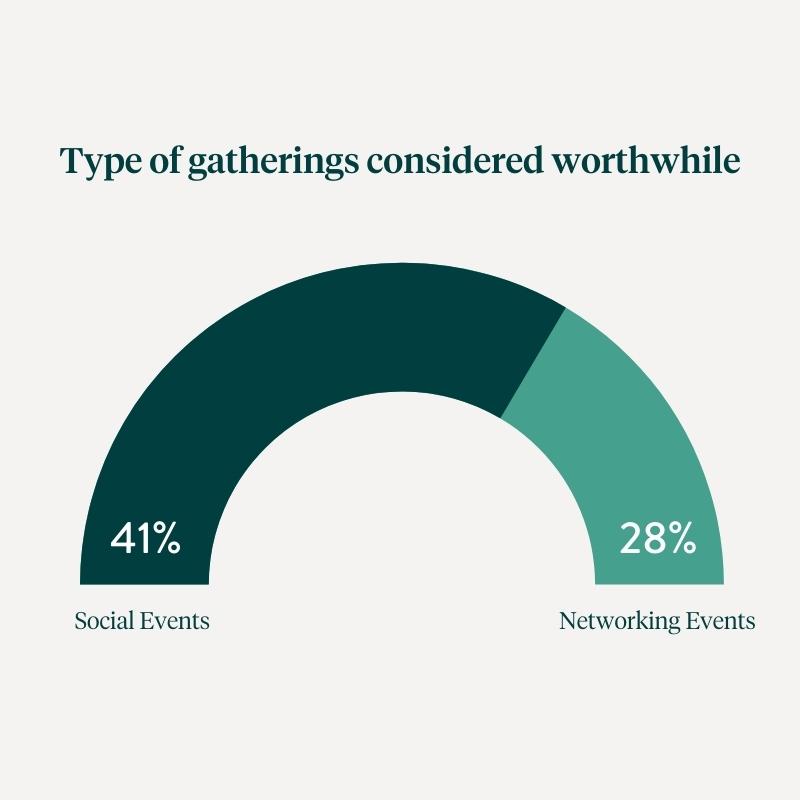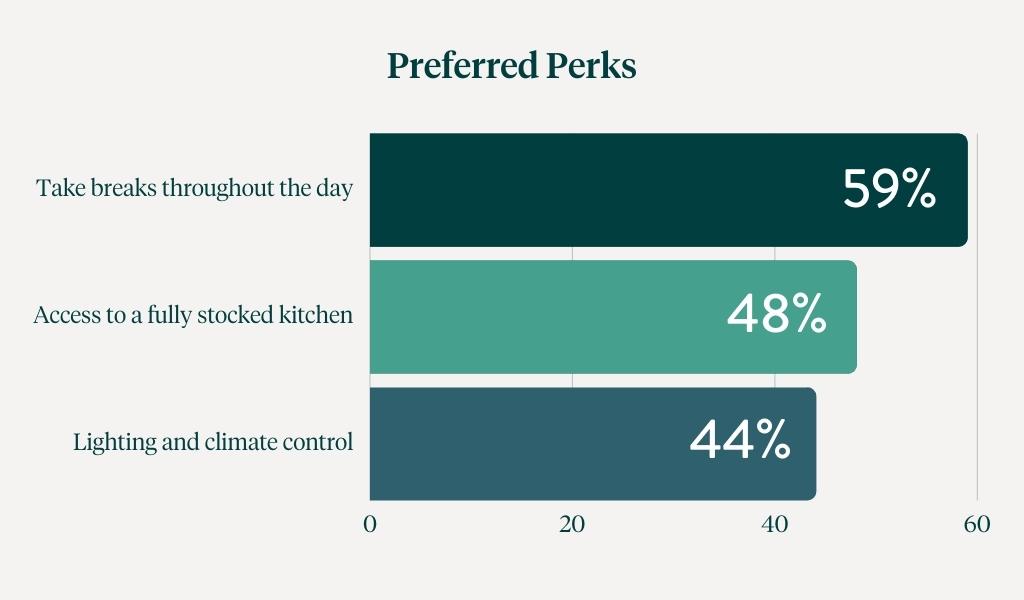Employee sentiment surveys tell us a lot.
Unpacking the ways employees think and feel helps us understand the state of work and ultimately becomes foundational feedback for how to improve the work experience.
At the time of this writing, it’s estimated that just 8% of workers report to city offices Monday through Friday. If employees are to return to the office in larger numbers, it’s clear some things need to change first.
Industrious partnered with Wakefield Research to capture the employee sentiment of more than 500 yet-to-return office workers to understand what it’ll take for workers to want to go back to the office. The following are some of our key findings from the survey.

Bring Your Dog to Work Day, Every Day?
Pet adoptions surged during the pandemic. According to the ASPCA, more than 23 million American homes adopted a pet in the last few years. To what extent does that inform the new attitudes of the workforce?
Our survey shows 48% of yet-to-return office workers feel a pet-friendly workplace is extremely important to them. These attitudes skew on the younger side, with 60% of Millennials finding it very or extremely important, compared to 42% Gen Xers and 32% of Boomers.
Millennials are currently the largest generation participating in the U.S. labor force. Years ago, when they first started participating in significant numbers, Millennials were the same generation to make pet-friendly work experiences a competitive culture perk for talent attraction. It only makes sense that this employee sentiment would become more entrenched as Millennials begin to make up the majority share of the workforce.
Many Industrious locations are pet-friendly. You can always check if an Industrious near you allows pets by viewing the location page’s “Building Amenities” section.
If you’re a business leader and are think about implementing pet-friendly policies, check out these tips.

Why we gather matters just as much as how
One of the consequences of our post-pandemic world is that people are more selective about which social functions merit an in-person appearance and which can stay held over Zoom.
When asked about types of gatherings they considered worthwhile, 41% of office workers report that social events are valuable. Meanwhile, only 28% feel networking events are valuable.
Networking, always a love-it or hate-it activity, has a higher degree of social inertia now. People are fine sticking to virtual events and LinkedIn messaging. The events employees want to participate in center on social connection, which more than 54% of employees say have become much more important to them over the course of the pandemic.
The lesson that companies should embrace is that why we gather today matters just as much as how. Put another way, the emotional outweighs the transactional. To overcome the social inertia of ‘going out,’ employees need to feel there’s a good reason to come together. Employee sentiment tells us connection and camaraderie are the answer.
Employee sentiment still favors the office, too
Just because many roles can now operate successfully in a full-remote environment doesn’t mean employees desire it. In fact, many employees want to come back to the office for things that working from home can’t compete with.
Office workers told us they feel the draw to return for benefits like enterprise-level internet quality and IT service, and high-grade equipment like printers. Things, in other words, that make doing your job easier or possible in the first place, but are too difficult to manage individually (as anyone who’s tried troubleshooting IT from home would surely agree).
However, employees don’t just want the same-old, same-old from the office experience. When they come back, they want to feel different — they want the experience of working from home to rub off on the office.
When it comes to the perks they want upon return:
- 59% of office workers want the ability to take breaks throughout the day
- 48% want access to a fully-stocked kitchen
- 44% want control over lighting and indoor climate

Another thing yet-to-return workers are looking for:
The room to socialize.
Roughly one in three Gen Z (32%) and Millennial workers (29%) want dedicated spaces that encourage socializing in the workplace.
Leaders would do well to think about this request. Not only do these attitudes harken back for the increased desire for social connection we’re seeing, but there are material performance benefits that come from in-office socialization too. Strong relationships between colleagues are a key driver of employee engagement, the elevated state of performance that channels higher productivity and innovation.
A little water cooler conversation here and there isn’t a distraction from work, it’s what fuels stronger relationships and better performance. If anything, employee sentiment is telling us to make the space around the water cooler bigger.